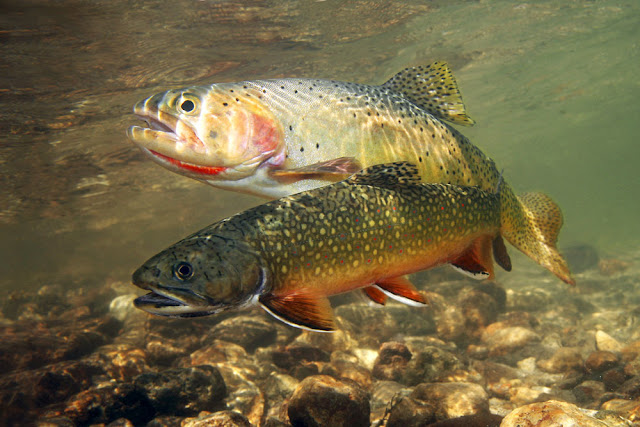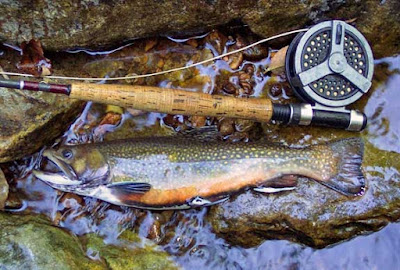1. Small Trout Hook
The littler your snare is and the better the wire, the more probable your trap will hang up in the water section and the slower it will drop on the fall - both greatly engaging activities to supplied rainbow trout. Size 14, 16 and 18 are superb decisions to expand your trout brings with the supplied trout we have in the Spring trout season. Run with genuine trout dry fly snares to get the correct size and take a stab at calling your lure shop to ensure these little trout snares are in stock.Check best lures for bas fishing in summer here
2.Big Float - Little Float - More Trout
Restricting out ordinarily I have been trout angling amid Illinois' trout loading seasons, I have taken in a considerable measure. On some days, the trout can be taken utilizing the biggest buoy however at times are numbers gotten on a round bobber. The more slender your nibble indictor is, the more you will se the trout hit. Trout may hit goads precisely - however they likewise are very skilled at launching the draw when they feel resistance. In the event that your bobber is wide, the fish can without much of a stretch dispose of your snare before you can get a snare set on these quick loaded rainbows. I have gotten them utilizing long-throwing waggler coasts yet as of late have had more fortunes utilizing much littler shaft buoys to attach. There are some days where the loaded trout "hit short". On nowadays you will see (with a property adjusted waggler) that the rainbows are hitting the buoy, it goes under and afterward flies move down with no fish. With the littler post coasts, throwing is constrained, however the fish once in a while let go of this setup. A.5 or.8 gram buoy is an executioner nibble marker for the supplied trout in DuPage and Cook Areas.3.Trout Boots
Follow these tips on your next "Trouting" and you will be rewarded. Some of these items will contrast with how you do it now- keep an open mind and try one or two, I hope they work for you, but you can't tell if your fishing will be better until you try.
Use these tips to catch more stocked rainbow trout will help you out when you head out to ponds, lakes and river - everywhere that trout are stocked for special fishing seasons. Catch you again soon - see I practice catch-and-release with you, and you should do the same with the fish you catch.
4.Thin Leaders Catch
Back to the eyesight - these fish can see tiny things so stealthy line will help prevent the trout from swimming past your bait. 2lb. and even 1 lb. leader line might be the difference between you scoring your first stocked trout and getting skunked. When the fishing gets tough- a thin line will score. The exception to fishing these skinny lines as your leader would be if you are dealing with a thick weed line on your lake. If this is the case- you might need a rake or rake head to clear a path through the weed. If you can create this channel - you can reel your trout in after playing them on the light line. The secret to playing fish on the light line is allowing the trout to run a bit and keeping them in the water. Backreeling is hitting the switch and physically reeling backwards toward the running fish - letting line out from your reel manually. Open face reels have a switch at the back bottom of the spool. Flip this one way and the reel only cranks in. Flip this the other direction and you can reel either forward or back. Keep tension on your fish with the rod tip and reel back and forward until you feel you have control.5.Live Trout Baits
Using live bait to catch the stocked trout is usually the way to go. There are some times when the artificial baits will work because these trout can be daft - and can hit anything during some times. If you wish to be the most consistent at catching the rainbow trout - you need to mind the eyes. Small baits appeal to the trout because of their superior eyesight they rarely miss a bait. The more natural your offering, the faster they will swim at and take your bait. They can see insects the size of a pencil dot so trout can tell the difference between fake and real. Think spikes, waxworms and small minnows to score.6.Hit or Miss Trout Fishing
Stocked Trout can be biting everything that moves through the water and they can also be swimming past every single piece of fishing tackle and bait that you throw. Don't expect that your perfect method will work every single time. The rainbow trout they stock in lakes around cities have been shipped across state lines and have had to adjust from their new environment. Expect maybe to get a few hits but adding time to your fishing might just help you to catch a few.
7.Opening Day Trout Fishing Crowds
The crowds can be thick. Don't expect a pristine setting, but instead think Black Friday (Saturday) with trout. Anglers will be crowded in very tightly in many places along the shore of your favorite pond. Be patient as the skills are not great of your neighboring trout fishermen. Expect to have your line cast over and a tangle is not out of the question in these tight, trout fishing ponds.
Johnny Wilkins







